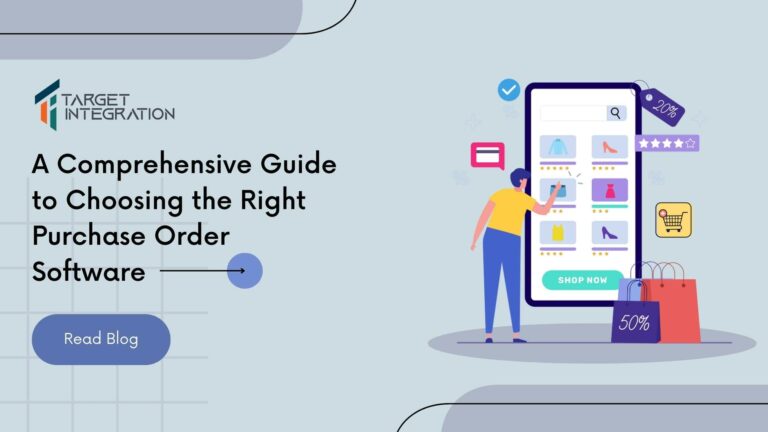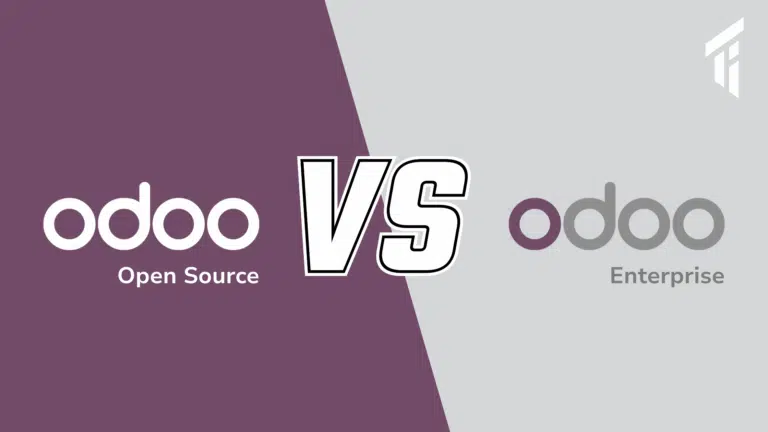Procurement software enables businesses to generate and transmit purchase orders electronically to suppliers, as well as receive electronic invoices. This software eradicates the necessity for manual data entry on both ends of the transaction, enhancing accuracy by ensuring the correct items are ordered in the appropriate quantities and timing.
Selecting the most suitable procurement software tailored to your business is crucial to meeting your company’s requirements. Purchase orders serve not only as requisitions for goods and services from suppliers but also as tools for monitoring vendor performance, establishing payment terms, inventory management, and laying the groundwork for your accounting department.

The ideal purchase order software will contribute to maintaining organizational efficiency and streamlining operations. In this article, we will explore the key factors to consider when choosing the most appropriate purchase order software for your company.
Understand What to Seek in Purchase Order Software
Before embarking on your search, it’s essential to clarify your requirements. What issues are you aiming to resolve, and what functionalities do you expect from a purchase order system? While evaluating these systems, it’s crucial to grasp the distinction between purchase requisitions and purchase orders, as it holds significant importance.
A purchase requisition serves as an internal document, signalling a need or request within an organization, typically requiring approval for a purchase. Conversely, a purchase order is a formal document directed to vendors, confirming the specifics of the intended purchase. The ideal software should adeptly accommodate both of these processes, efficiently streamlining and differentiating between them.
These considerations will guide you towards the most appropriate provider, offering a comprehensive solution tailored to your requirements. Nonetheless, there are fundamental features that any software should encompass to effectively support your business operations. Let’s delve into these features and why they should be of significance when selecting a purchase order software provider.
Inventory Control
Effective software should enhance your inventory management capabilities. With the inventory control feature, you gain a comprehensive view of your stock items, facilitating seamless procurement planning without the stress of last-minute issues.
Having a complete overview is vital in preventing awkward situations where you promise to deliver items that are not in your inventory. This feature enables you to effortlessly monitor everything, from raw materials to finished products.
Data Analysis
The chosen software should furnish you with analytical reports that offer insights into your business’s performance. This feature utilizes historical data to provide projections of your business’s future accomplishments.
Vendor Management
This is where you can centralize all your vendor-related information, including names, addresses, contact details, and payment terms. Consolidating this data in a single location simplifies accessibility for everyone, eliminating the need for sharing files via email or dealing with stacks of paperwork in the office.
Moreover, you can easily identify vendors who offer specific products at competitive prices by perusing their catalogues.
Purchase Order Status Monitoring
A purchase order (PO) tracking feature within the PO software integrates seamlessly with accounting systems. As shipments are made or invoices are paid, the order status is automatically updated in your accounting software.
It is crucial to stay informed about the status of your purchase orders once they are dispatched. Is the PO still pending? Has it received approval? Has it been shipped? With this feature, you can monitor each stage of the purchase order (PO) process in real time, ensuring that no important details slip through the cracks.
For instance, if you have an order awaiting approval, you can promptly identify the approver and understand the reason for the delay.
The Significance of Purchase Order Tracking
Purchase order tracking plays a crucial role in the realm of procurement, ensuring efficiency, transparency, and cost management. It involves overseeing the entire lifecycle of purchase orders, from their creation to fulfilment and payment. The importance of purchase order tracking in procurement becomes evident through several key advantages:
- Enhanced Visibility and Accountability: Purchase order tracking provides real-time visibility into the status of orders, promoting accountability among both suppliers and buyers. This helps mitigate the risk of errors and disputes.
- Effective Budget Management: This tool allows organizations to maintain control over their budgets by monitoring expenditures against approved purchase orders. It prevents overspending and facilitates informed financial decision-making.
- Supplier Performance Assessment: Purchase order tracking aids in evaluating the performance of suppliers, enabling organizations to identify reliable partners and address issues with underperforming ones. This, in turn, strengthens supplier relationships.
- Streamlined Workflow: By optimizing the procurement workflow, purchase order tracking ensures timely order processing, reducing delays and minimizing disruptions caused by late or missing supplies.
- Compliance and Audit Trail: Maintaining comprehensive purchase order records ensures compliance with regulatory requirements and provides a trail for internal and external audits, ensuring transparency and accountability.
- Forecasting and Planning: Historical purchase order data serves as a valuable resource for future procurement planning. It empowers organizations to make data-driven decisions, optimize inventory levels, and negotiate favourable terms with suppliers.
- Error Reduction: Purchase order tracking helps identify discrepancies and errors early in the process, reducing the risk of incorrect shipments, billing discrepancies, or missing items.
Purchase order tracking is an essential tool for effective procurement management. It empowers organizations to refine their procurement processes, exercise fiscal control, nurture supplier relationships, and ultimately contribute to overall business success.
Distinguishing Sales Orders from Purchase Orders: Essential Insights for Business Success
Sales orders and purchase orders are fundamental documents in the realm of business, each with a distinct role within the supply chain. Sales orders represent the demand aspect, initiated by customers when they wish to acquire goods or services from your company. These orders delineate the specific requirements of customers, including what they need and when they need it. Conversely, purchase orders are generated by your company when you intend to procure goods or services from suppliers. They outline your requirements, purchase terms, and the desired delivery schedule.
Comprehending the significance of these documents is paramount. Sales orders aid your business in managing customer demand, ensuring accurate and timely order fulfilment. Additionally, they serve as a foundation for revenue recognition, facilitating the tracking of sales performance. Meanwhile, purchase orders are crucial for efficient supply chain management. They empower you to control costs, negotiate favourable terms with suppliers, and maintain inventory levels that meet demand without overstocking.
Automated Generation of Purchase Orders
This feature stands as the most pivotal aspect of any Purchase Order software. The primary function of the software is to create and issue purchase orders effortlessly.
The software should facilitate the swift dispatch of purchase orders with all requisite details, including item specifications and shipping information.
Furthermore, this feature encompasses the inclusion of terms and conditions within the order, encompassing payment terms, delivery dates, and applicable discounts.
Order Approval and Rejection
Approval plays a pivotal role in the purchase order cycle, and the process should be straightforward for approvers to either approve or reject an order without complications. Businesses often handle order approvals and rejections through email notifications or SMS alerts. The ability to conduct bulk approvals should also be available, saving valuable time.
Streamlining Approvals and Requisitions
Purchase order management software frequently includes a workflow tool that automates the approval process. The software operates by notifying designated managers when an employee generates a purchase order, and the requisite approvals are automatically routed to the finance department or other decision-makers.
Additionally, you can establish spending limits for employees, ensuring that expenditures beyond a certain threshold necessitate approval, effectively curbing unnecessary spending.
Blanket Purchase Orders
A blanket purchase order is an arrangement that authorizes repeated purchases of products or services from a vendor. It allows buyers to consolidate payment for multiple products or services without requiring a new purchase order for each transaction.
The blanket purchase order feature empowers businesses to establish authorization for multiple purchases under specific conditions. These authorizations grant suppliers the ability to provide the goods or services listed in the document over a predetermined period or until predefined spending limits are reached.
This feature proves invaluable as an alternative to creating numerous one-time purchase orders, which would demand greater administrative effort.
Matching Purchase Orders and Invoices
Purchase order software equipped with this feature compares the original purchase order against the supplier’s invoice, meticulously checking for any disparities. This functionality expedites invoice processing, reduces errors, accelerates payment cycles, and aids in the detection of potential fraud issues.
Some purchase order solutions go a step further by eliminating paper, capturing invoice data electronically, and automatically matching it to the corresponding purchase order within an accounting system.
In addition to these critical capabilities, there are other essential factors to consider before selecting a specific provider:
Flexibility in Plan Selection
Beyond the functional aspects, it’s crucial to evaluate the provider’s operational models to ensure alignment with your business’s capabilities.
Be cautious of companies offering only a single plan, as it may not suit your business requirements. Ensure that the software package offers flexible plans tailored to address the specific needs of your business. Whether you prefer monthly payments or a per-transaction model, you should have the freedom to choose the option that best suits your organization.
Purchase Order Terms and Conditions in Detail
Purchase order terms and conditions serve as the legal and operational framework that governs the buyer-supplier relationship in a purchase transaction. These terms and conditions outline the respective rights, obligations, and expectations of both parties involved, ensuring a transparent and structured process for the purchase. Key elements of purchase order terms and conditions include:
- Payment Terms: This section specifies the details regarding payment, including the accepted payment methods, payment due dates, and the currency in which payments will be made.
- Delivery Terms: These terms define how and when the goods or services will be delivered. This includes information on shipping methods, agreed-upon delivery dates, and any associated delivery costs.
- Product Specifications: This part provides comprehensive descriptions of the products or services being purchased. It outlines specifications such as quantity, quality standards, and any warranties or guarantees that apply.
- Pricing: The mutually agreed-upon prices for the products or services are clearly stated in this section. This may also encompass any negotiated discounts, taxes, or additional fees.
- Cancellation and Returns: Guidelines for cancelling or returning orders, along with any associated penalties or restocking fees, are typically addressed in this part of the terms and conditions.
- Intellectual Property: If relevant to the transaction, this section addresses the ownership and usage rights of any intellectual property associated with the purchase, ensuring clarity and protection.
- Dispute Resolution: Procedures for resolving disputes between the buyer and the supplier are outlined here. Common dispute resolution methods include negotiation, mediation, or arbitration.
- Confidentiality: This section safeguards sensitive information shared during the transaction, ensuring that it remains confidential and secure.
The Role of Procurement Software
Procurement software plays a pivotal role in managing purchase order terms and conditions:
- Automation: Procurement software streamlines the creation of purchase orders and ensures that the relevant terms and conditions are automatically included, reducing manual errors and saving time.
- Compliance: Procurement software helps ensure that purchase orders adhere to industry regulations and align with an organization’s internal policies, promoting adherence and transparency.
- Visibility: By digitally storing purchase order terms and conditions, procurement software enables easy access and reference, enhancing transparency and accessibility.
- Auditing: Procurement software maintains comprehensive records of all purchase orders and their associated terms and conditions, facilitating audits and compliance checks.
Benefits of Properly Managed Purchase Order Terms and Conditions
Effective management of purchase order terms and conditions offers several significant benefits:
- Risk Mitigation: Clear and well-defined terms and conditions reduce the risk of disputes and legal issues, protecting the organization from potential financial and reputational harm.
- Cost Control: Well-negotiated terms can lead to cost savings through favourable pricing, discounts, and flexible payment terms.
- Supplier Relations: Structured terms and conditions foster positive relationships with suppliers, enhancing collaboration and reliability in the supply chain.
- Efficiency: Procurement software ensures that terms and conditions are consistently applied across all purchase orders, reducing manual effort and ensuring accuracy in procurement processes.
Exploring Purchase Order Software Solutions
When considering purchase order software solutions, here are some steps to guide your selection process:
- Seek Recommendations: Consult with other businesses in your industry to gather insights into the purchase order software they use and their experiences, as word-of-mouth recommendations can be valuable.
- Review Online Sources: Explore online review sites such as Capterra, G2 Crowd, and Software Advice to access user feedback and comparisons of different software options, helping you make informed decisions.
Benefits of Purchase Order Software
Implementing purchase order software offers numerous advantages for your business:
- Accelerated Processing: Purchase order software expedites the creation and management of purchase orders, saving time and improving efficiency.
- Reduced Errors: Automation minimizes the risk of manual data entry errors and ensures accurate order processing.
- Centralized System: Purchase order software stores all data in one centralized location, promoting easy access and streamlined operations.
- Cost Savings: Efficient purchase order management can lead to cost savings through optimized processes and favourable terms.
- Enhanced Supplier Relations: Well-managed purchase orders contribute to positive relationships with suppliers, fostering collaboration and reliability.
Transitioning to Purchase Order Software
When transitioning to purchase order software, consider the following steps for a smooth implementation:
- Standardize Processes: Establish standardized purchasing processes within your organization to ensure consistency and clarity in workflow.
- Train Your Staff: Provide comprehensive training to staff members on how to effectively use the new software tailored to their specific roles and responsibilities.
By effectively managing purchase order terms and conditions and implementing purchase order software, your organization can streamline procurement processes, enhance efficiency, and reduce risks, contributing to overall operational success.
The Essential Role of a Purchase Order Template in Enhancing Business Efficiency
In the dynamic realm of business operations, precision and efficiency stand as paramount factors for success. In this context, a Purchase Order Template, integrated into word processing software, assumes a pivotal role for companies. Despite its apparent simplicity, this document serves as the linchpin for effective procurement, ensuring that orders remain crystal clear, well-organized, and fully compliant with company policies.
The utilization of a Purchase Order Template empowers businesses to streamline their procurement processes, significantly reducing the risk of errors and miscommunications. Acting as a standardized blueprint, it guides employees through the intricate procurement journey while enhancing communication between different departments.
Moreover, this template aids businesses in maintaining comprehensive records of their procurement activities, fostering transparency and accountability. Its value becomes even more apparent during audits, budget planning, and negotiations with vendors.
Optimizing the Order-to-Cash Process: Boosting Efficiency and Revenue Growth
The Order-to-Cash (O2C) process constitutes a foundational workflow within any organization, bearing a profound impact on revenue generation and customer satisfaction. This comprehensive process encompasses the entire lifecycle of a customer’s order, commencing with the initial request and culminating with the receipt of payment.
The O2C process typically encompasses the following critical phases:
- Order Creation: The process initiates with a customer placing an order, either through various sales channels or by engaging directly with the company.
- Order Processing: Upon receiving an order, it undergoes validation, and inventory availability is verified. Necessary approvals are secured, and the order is primed for fulfilment.
- Fulfilment: This phase involves the picking, packing, and shipping of products or services to fulfil the customer’s request. Efficient fulfilment is paramount to meeting customer expectations.
- Invoicing: Invoices are generated based on the order, meticulously detailing the products or services provided, their quantities, and the agreed-upon prices. This step plays a pivotal role in revenue recognition.
- Payment Processing: Following the receipt of the invoice, the customer makes payment via their preferred method, which may include credit cards, checks, or online payment systems.
- Cash Application: Payments received are matched with the corresponding invoices and applied to the customer’s account. This step ensures accurate financial record-keeping.
- Collections: In cases of delayed payments or disputes, organizations may engage in collections activities to recover outstanding funds.
- Reporting and Analysis: Throughout the O2C process, data is gathered and analyzed to monitor performance, identify bottlenecks, and make informed decisions for process enhancement.
Efficiency and accuracy are pivotal in the O2C process for maintaining healthy cash flow, reducing operational costs, and nurturing positive customer relationships. Organizations increasingly turn to automation, integrated software solutions, and data-driven insights to streamline and optimize this process.
Conclusion
Purchase Orders (POs) play a pivotal role in managing cash flow within your business. An efficient purchase order system empowers you to navigate cash flow effectively by enabling timely payments for purchases, a critical factor in maintaining a favourable credit score.
Selecting the right purchase order system is crucial. It should strike a balance between simplicity and feature-rich functionality, meeting your business needs without unnecessary cost escalation. Once you identify the ideal purchase order software, its implementation becomes a smoother process. High-quality purchase order software can serve as the bedrock of your business finances, making your choice a decision of paramount importance.





